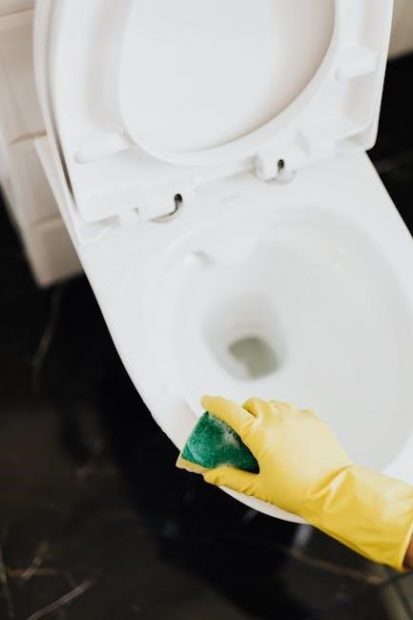The GE Oven Self-Cleaning Feature is a convenient and efficient way to maintain your oven’s cleanliness. It uses high temperatures to burn off food residue, simplifying maintenance and reducing the need for harsh chemicals. This eco-friendly and time-saving function ensures your oven remains in optimal condition, enhancing both performance and longevity.
What is the Self-Cleaning Feature?
The self-cleaning feature on GE ovens is a built-in function that uses high temperatures to burn away food residue, turning it into ash for easy cleanup. This feature is designed to eliminate the need for harsh chemicals, making oven maintenance safer and more efficient. During the cycle, the oven locks to ensure safety, reaching temperatures high enough to effectively clean interior surfaces. It’s a convenient solution for maintaining your oven’s hygiene without manual scrubbing.
Benefits of Using the Self-Cleaning Function
The self-cleaning function offers numerous benefits, including effortless food residue removal without harsh chemicals. It saves time by automating the cleaning process and reduces manual scrubbing. High temperatures effectively break down tough stains, leaving behind a clean oven. This feature also enhances oven longevity by preventing food buildup and maintains its performance. It’s an eco-friendly and efficient way to keep your oven hygienic and in great condition for years to come.
Understanding the Self-Cleaning Process
The self-cleaning process uses high temperatures to burn food residue into ash, eliminating the need for scrubbing. It’s a safe and efficient way to maintain your oven’s cleanliness.
How the Self-Cleaning Cycle Works
The self-cleaning cycle operates by heating the oven to extremely high temperatures (around 800-900°F) to burn food residue into ash. Once initiated, the oven door automatically locks for safety. The cycle typically lasts 2-4 hours, depending on soil level. After completion, the oven cools, and the ash can be easily wiped away. This process eliminates manual scrubbing and harsh chemicals, making it a convenient and efficient cleaning method for maintaining your oven.
Types of Self-Cleaning Cycles Available
GE ovens offer multiple self-cleaning options to suit different needs. The steam cleaning mode uses water vapor for a gentle, chemical-free clean, ideal for light messes. The light-duty cycle is perfect for regular maintenance, while the heavy-duty cycle tackles tough grime with high temperatures. Some models also feature a quick clean option for faster results. These varied cycles ensure efficient cleaning based on the level of soil and desired time investment, making maintenance convenient and adaptable.

Preparing Your Oven for Self-Cleaning
Before activating the self-cleaning feature, remove racks and shelves, and clean the oven floor with a nylon brush or soapy water. Ensure the oven is cool, as high temperatures can damage surfaces. Avoid using abrasive materials that might scratch the interior. Proper preparation ensures a safe and effective cleaning cycle, preventing damage and maintaining your oven’s performance.
Steps to Prepare the Oven for Cleaning
Start by removing all racks, shelves, and utensils from the oven. Clean the oven floor with a nylon brush or sponge and warm soapy water. Ensure the oven is completely cool to avoid damage. Do not use abrasive materials or harsh chemicals, as they may scratch the surface. Wipe down the door and window with a soft cloth to remove grease. If your oven has self-cleaning panels, ensure they are properly secured. Refer to your GE oven manual for specific instructions tailored to your model.
Removing Oven Racks and Shelves
Before starting the self-cleaning cycle, remove all oven racks and shelves. Allow the oven to cool completely to prevent damage or burns. Gently pull the racks out and set them aside for cleaning. For tougher residue, soak racks in warm soapy water. Ensure all parts are removed to allow proper airflow during the cleaning cycle. Refer to your GE oven manual for specific instructions on rack removal for your model. This step ensures a safe and effective cleaning process.
Operating the Self-Cleaning Cycle
Press the AUTO CLEAN or AUTO SELF CLEAN pad on your GE oven. Set the clean time using the + or ー pad, then start the cycle.
Starting the Self-Cleaning Process
To initiate the self-cleaning cycle on your GE oven, ensure the oven is cool. Close and latch the door securely. Press the AUTO CLEAN or AUTO SELF CLEAN button on the control panel. If your model has a preset clean time, it will default to 3 hours. Adjust the time using the + or ー pads if needed. Once set, press Start to begin the cycle. The oven will heat to high temperatures to burn away food residue. Do not open the door during this process. Let the cycle complete and allow the oven to cool before cleaning up residue.
Setting the Clean Time and Monitoring the Cycle
After starting the self-cleaning process, adjust the clean time if needed using the + or ⎻ pads. The default cycle is 3 hours, but you can customize it based on soil level. Once set, press Start to begin. Monitor the cycle through the display, ensuring the oven remains closed throughout. After completion, let the oven cool before wiping away ash. Proper ventilation is recommended during and after the cycle to avoid fumes.

Safety Precautions During Self-Cleaning
Ensure proper ventilation during self-cleaning to prevent fumes. Avoid using abrasive cleaners on glass doors. Keep children away from the oven during the cycle. Never force the door open while cleaning.
Important Safety Tips
Always ensure proper ventilation during self-cleaning to avoid fumes. Never open the oven door during the cycle, as high temperatures can cause burns. Keep children and pets away from the oven while it is cleaning. Avoid using abrasive cleaners or sharp objects on glass doors, as they may scratch the surface. Do not force the oven door open during the cleaning process. Turn off the oven and unplug it if you notice any malfunctions or unusual smells.
What to Do During the Cleaning Cycle
Keep the oven door closed throughout the cleaning cycle to ensure safety and effectiveness. Maintain proper ventilation in your kitchen to prevent fumes from accumulating. Avoid opening the door during the cycle, as high temperatures can cause burns. Do not leave the oven unattended, especially with children or pets nearby. If unusual smells or smoke appear, ensure the area is well-ventilated but do not interrupt the cycle. The process typically takes 2-4 hours, depending on soil level. Let the oven cool completely before cleaning residue. Stay vigilant for any signs of malfunction and act promptly if necessary.

Maintenance and Care After Self-Cleaning
Regular maintenance ensures your GE oven remains efficient. After the self-cleaning cycle, let the oven cool, then wipe down surfaces with a damp cloth. Clean racks separately and check for any remaining food residue. This routine helps maintain hygiene and performance, keeping your oven in prime condition for future use.
Cleaning the Oven After the Cycle
After the self-cleaning cycle, allow the oven to cool completely. Use a damp cloth to wipe down interior surfaces, removing any ash or residue. Avoid using harsh chemicals, as they can damage the finish. For tougher spots, a gentle cleanser may be applied. Clean racks and shelves separately with warm soapy water or a mild abrasive. Regularly cleaning after the cycle ensures a spotless oven and prevents food residue from building up over time.
Maintaining the Oven’s Exterior and Interior
Regular cleaning is essential to keep your GE oven in prime condition. Wipe the exterior with a damp cloth, avoiding harsh chemicals that could damage the finish. For stainless steel surfaces, use a microfiber cloth and a gentle cleanser to prevent streaks. Inside, clean up food spills promptly to avoid tough residue buildup. Use a soft sponge or nylon brush for enamelled surfaces, and avoid abrasive materials that could scratch. Always dry surfaces after cleaning to prevent water spots and maintain a polished appearance.

Troubleshooting Common Issues
Common issues include error codes, oven not turning off, or malfunctioning cycles; Check power supply, circuit breakers, and ensure door latch is secure. Consult manual for solutions or call a professional if problems persist.
Malfunctions and How to Address Them
Malfunctions during the self-cleaning process may include error codes, oven not turning off, or the cycle not completing. Check the power supply and ensure the door latch is secure. If issues persist, consult the GE oven manual for troubleshooting guides or reset the oven. For unresolved problems, contact GE customer support or a certified technician to avoid further damage or safety risks.
When to Call a Professional
If the self-cleaning feature malfunctions and error codes persist, or if the oven door remains locked after cooling, it’s best to contact a professional. Similarly, if the oven’s heating element is damaged or the self-cleaning cycle doesn’t complete, expert assistance is recommended. For complex issues like electrical problems or faulty sensors, a certified technician should be consulted to ensure safety and proper repair. Always disconnect power before attempting any repairs.
Additional Tips for Effective Cleaning
For effective cleaning, use nylon brushes or sponges with warm soapy water for enamelled surfaces. Avoid harsh detergents to prevent damage and maintain your oven’s finish.
Using the Right Cleaning Tools
Using the right cleaning tools is essential for maintaining your GE oven. For enamelled surfaces, use a nylon brush or sponge with warm soapy water to avoid scratches. Avoid harsh detergents, abrasive materials, or sharp metal scrapers, as they can damage the finish. For tougher residue, steam cleaning with water can loosen grime effectively. Always clean racks separately with mild abrasives to prevent damage. Regular use of gentle yet effective tools ensures a pristine oven interior and exterior without compromising safety or durability.
Optimizing the Self-Cleaning Function
Optimize your GE oven’s self-cleaning function by running regular cycles to prevent heavy grime buildup. For best results, remove racks and shelves beforehand to ensure even cleaning. Use the steam cleaning option with water for tougher residue. Avoid harsh chemicals, as the high heat does the work. Clean filters and vents regularly to maintain efficiency. Always follow the manual’s guidelines for cycle duration and temperature settings to ensure safe and effective cleaning, preserving your oven’s performance and longevity.
The GE Oven Self-Cleaning Feature offers a convenient, efficient, and eco-friendly way to maintain your oven. Regular use ensures optimal performance and longevity, making it a valuable investment for any kitchen.
Final Thoughts on Using the Self-Cleaning Feature
The GE Oven Self-Cleaning Feature is a valuable investment for maintaining a clean and efficient kitchen. By following the manual’s instructions, users can safely and effectively remove food residue without harsh chemicals. Regular use of this feature ensures optimal oven performance and longevity. Always prioritize safety precautions, such as allowing the oven to cool and avoiding abrasive cleaners. Proper maintenance enhances cooking results and keeps your oven in pristine condition for years to come.
Encouragement for Regular Maintenance
Regular maintenance is key to extending your oven’s lifespan and performance. Cleaning food residue promptly prevents stubborn stains and damage. Use the self-cleaning feature or manual methods as needed. Always clean racks and shelves separately for optimal results. A well-maintained oven ensures safer cooking, better efficiency, and a cleaner kitchen. By following these practices, you’ll enjoy a like-new oven for years, making cooking easier and more enjoyable. Consistency is essential for long-term benefits and reliability.
References
Refer to the GE Oven Manual for detailed self-cleaning instructions and safety guidelines. Additional resources include GE’s official website and authorized service provider materials for further assistance.
GE Oven Manual and Additional Resources
The GE Oven Manual provides comprehensive guidance on using the self-cleaning feature, including safety tips and troubleshooting. For further assistance, visit the official GE Appliances website, which offers downloadable manuals, FAQs, and customer support contact information. Additional resources include authorized GE service centers and online forums where users share tips and solutions. Always refer to official sources to ensure accurate and safe operation of your oven’s self-cleaning function.
